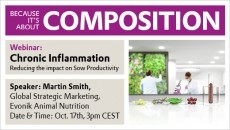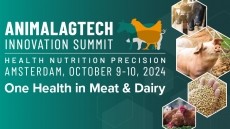Agencies unite to reduce food waste

The Food Waste Challenge builds upon the EPA’s Food Recovery Challenge, an effort designed to encourage American citizens and businesses to cut down on wasted food. Launched in conjunction with June 4ths’s World Environment Day, the initiative encourages food processing companies, producers, manufacturers, retailers, communities and government agencies to help reduce food loss, recover edible food and recycle discarded foods (for animal feed, compost, energy and other uses).
History of recovery
EPA representative Enesta Jones told FoodProductionDaily that the agency has a long history of working to prevent food waste, including establishment of the Food Recovery Hierarchy in 1999 and establishment of the Food Recovery Challenge in the early 2000s.
“EPA is committed to protecting human health and the environment and is working with organizations through the Food Recovery Challenge and the U.S. Food Waste Challenge to help them reduce their food waste, helping not only the environment, but also helping organizations save money and help their community,” she said. “The EPA and USDA have a long history of working together sharing information, data and resources, including those related to food loss and waste. So it was only natural that we would continue that relationship as USDA began to undertake the US Food Waste Challenge.”
According to EPA acting administrator Bob Perciasepe, food waste takes up more space in landfills than any other type of refuse.
“Americans throw away up to 40 percent of their food,” he said, “Addressing this issue helps to combat hunger and save money, while also combating climate change.”
Perciasepe added that food waste in landfills leads to gas emissions, so reducing food waste can help reduce the presence of harmful greenhouse gases in the atmosphere.
Taking part
To participate in the challenge, organizations keep track of the activities they plan to tackle to help reduce, recover, or recycle food waste in the United States. At the launch event, USDA, EPA, and founding U.S. Food Waste Challenge participants announced their commitments and invited others to join in reducing, recovering, and recycling food waste across the U.S. food chain, from farm to final disposition.
Jones pointed out that food processing and manufacturing firms are among the parties that stand to have a significant impact on the effort to reduce food waste. She added that such companies can take a few simple steps to start down the path to avoiding food waste.
“First and foremost, start measuring how much food waste they generate and how they are currently managing it,” she said. “Waste is a sign of inefficiency, and they may be very surprised at just how much of their purchasing dollars are going to waste. From there they can start to identify the greatest opportunities to reduce that waste, and more than likely, save money.”
Fighting hunger
US agriculture secretary Tom Vilsack pointed out that in addition to diverting food from moldering in landfills, efforts like the Food Waste Challenge can help combat hunger and feed the needy.
“By joining together with EPA and businesses from around the country, we have an opportunity to better educate folks about the problem of food waste and begin to address this problem across the nation,” he said.
The Food Recovery Challenge provides direct technical assistance, a tracking system, and recognition to help support and motivate organizations to reduce their food waste. Through the simple act of measuring food that is wasted, organizations can immediately identify simple changes that lead to big reductions More than 200 organizations (including retailers like Supervalu and Whole Foods) currently participate in the program.


















